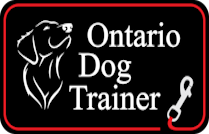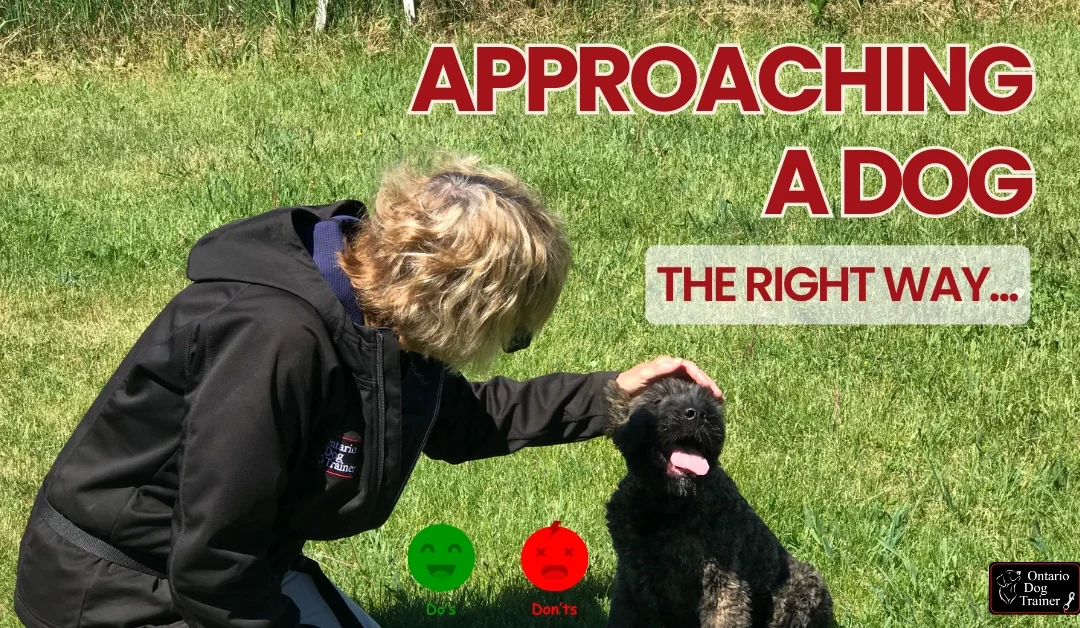The Right Way to Approach a Dog: Tips from a Professional Dog Trainer
A while ago, I posted an Instagram reel showing the right (and very wrong) way to approach a dog in public—and it took off. The comments section was filled with dog owners nodding in agreement, trainers cheering it on, and plenty of people admitting, “Okay, I’ve definitely done the wrong thing before.”
Since that reel resonated with so many people, I figured it was time to dive deeper into this topic. If you want to greet a dog without making a scene (or getting side-eyed by the owner), read on.
Ever seen someone greet a dog in the worst possible way? You know the type—high-pitched “Hi puppy, puppy, puppy!” while rushing up and getting right in the dog’s face. The poor pup jumps, flails, or tries to escape, while the owner awkwardly wrestles with the leash.
If you’ve ever done this, don’t worry—you’re not alone. But let’s fix it.
There’s a right way and a wrong way to approach a dog in public. The wrong way creates stress for both the dog and the owner. The right way? It’s calmer, safer, and makes for a better experience for everyone involved.
Why Rushing Up to a Dog Is a Bad Idea
1. It’s Overwhelming for the Dog
Imagine a stranger running up to you, clapping their hands in your face, and shouting your name. Would you enjoy that? Probably not. Dogs feel the same way.
Many dogs find sudden, high-energy approaches intimidating. Even if they love people, the excitement can push them over the edge into over-exuberance—or even fear.
2. It Stresses the Owner
Dog owners know their dogs best. Some dogs are friendly but need space. Others are still learning leash manners. If you come in too fast and too loud, you’re forcing the owner to manage a situation they may not be prepared for.
3. It Encourages Jumping and Bad Habits
If you hype up a dog on the street, you’re training them to greet people in a chaotic way. Not every dog should be jumping up to meet strangers, and owners don’t deserve to deal with their dog’s behavior problems caused by people with good intentions, and a lack of knowledge about dog etiquette. By approaching calmly, you help reinforce good manners instead of rewarding excitement.
The Right Way to Approach a Dog
Step 1: Ask the Owner First
Before you do anything, always ask: “May I pet your dog?”
Not every dog wants to say hello. Some are nervous, in training, or simply not in the mood. A responsible owner will appreciate your courtesy and let you know if it’s okay.
Step 2: Turn Your Body Slightly to the Side
Dogs read body language better than words. A full-frontal approach can feel confrontational, especially to a nervous dog. Instead:
- Turn slightly sideways.
- Avoid direct eye contact at first.
- Keep your movements calm and non-threatening.
- Remain silent. At the very least, don’t speak in a high-pitched, baby-talk voice.
Step 3: Let the Dog Choose to Approach You
Instead of lunging in, invite the dog into your space:
- Crouch or kneel (if it’s comfortable for you) and avoid direct eye contact.
- Keep your hands relaxed, still and close to your body. If offering food for enticement, hold the treat in your open palm, rest your elbow on your knee. Note: a stressed dog generally will not take food.
- Let the dog decide if they want to come closer.
If the dog sniffs you and stays close, you’ve been accepted! If they hang back, respect their decision and don’t push it.
Step 4: Pet in the Right Places
Some dogs love head pats. Others don’t. Safe spots to pet include:
✅ Chest
✅ Shoulders
✅ Side of the neck
Avoid reaching over the top of the dog’s head, or directly into its face, as this can feel threatening.
Step 5: Keep It Brief and Positive
After a short interaction (think of it like shaking someone’s hand – brief and purposeful), step back and allow the dog to return to their owner. No need to drag out the greeting or make it a full-blown cuddle session unless the dog is actively engaging.
Example of a Proper Greeting:
- You: “Oh, what a cute puppy! May I pet her?”
- Owner: “Sure!”
- You: (turns slightly, crouches, avoids direct eye contact. Keep hands still and slightly extended with palm up (add a treat if possible); if dog withdraws, keep your hands close to your body, or rest your hand on your knee. If you feel the need to speak, softly offer something like “Hey there, pup!”
- Dog approaches? Yes! Calm, gentle pets and praise.
- Dog doesn’t approach? Respect their space and move on.

Common Mistakes to Avoid
🚫 High-pitched, excitable voices. (Screaming “Hi puppy!!!” gets you a wild dog.)
🚫 Directly reaching over a dog’s head. (It can be intimidating.)
🚫 Rushing into their space. (Respect their comfort zone.)
🚫 Forcing interaction. (If they don’t come to you, don’t chase.)
🚫 Ignoring owner warnings. (If they say “She’s shy,” take the hint.)
Teaching Kids How to Approach a Dog
Kids are often the worst offenders when it comes to over-excited greetings. Teach them these simple rules:
🟢 Always ask the owner first.
🟢 Let the dog come to them.
🟢 Pet gently, no grabbing or hugging.
🟢 If the dog moves away, don’t chase.
Parents, it’s up to you to model calm interactions. If you hype your kid up and let them rush in, you’re setting them up for failure (and potentially a scared or reactive dog).
What If a Dog Approaches You First?
Sometimes, a loose dog or an overly friendly pup will come straight to you. In this case:
✅ Stay calm—don’t flail or scream.
✅ Stand still and turn slightly sideways.
✅ Let them sniff, then pet only if they seem receptive.
If the dog jumps on you, cross your arms and ignore them until they settle down; (If needed, shuffle forward into their space to back them off – NEVER turn your back on an approaching or jumping dog). Reward calm behavior with attention.
Why This Works
This approach works because it respects the dog’s personal space and communication style. By letting the dog make the first move, you build trust instead of triggering stress or over-excitement.
When you approach a dog correctly, you help reinforce good manners, create positive experiences, and make life easier for dog owners everywhere.
Quick Recap: The Do’s and Don’ts
✅ Do This:
✔ Ask the owner before petting.
✔ Turn your body slightly.
✔ Let the dog approach first.
✔ Pet in neutral areas (chest, shoulder, neck).
✔ Keep greetings calm and short.
❌ Don’t Do This:
✖ Run up to the dog.
✖ Use high-pitched, overexcited voices.
✖ Stare directly into their eyes.
✖ Reach over their head.
✖ Force interaction if the dog isn’t interested.
Final Thoughts
Approaching a dog the right way is about respect, awareness, and patience. Whether the dog is a friendly pup or a shy dog, your approach can make or break the interaction.
So next time you see a dog on the street, take a breath, ask permission, pause and let the dog come to you. Your new four-legged friend (and their owner) will thank you for it.
Got questions? Drop them in the comments—I’m happy to help!
📥 Get your free guide now: Click Here
Enjoyed this read? For more no-nonsense insights on dog training and behavior, check out my earlier blogs:
- Tick-Borne Diseases in Dogs: What Every Dog Owner Needs to Know
- Teaching Your Reactive Dog to Stay Calm: The Art of Doing Nothing
- Dog Dental Care: Why It’s More Important Than You Think
There’s always something new to learn, even if it’s just a different perspective on the everyday challenges we face. Happy reading!
Join my Email List to get frequent updates, free downloadables, and dog training tips! Click here to subscribe.
Get the latest updates when we publish new freebies and guides by signing up. Your dog will thank you, and you’ll be the first to know when new gifts are available!
Let’s stay connected:

